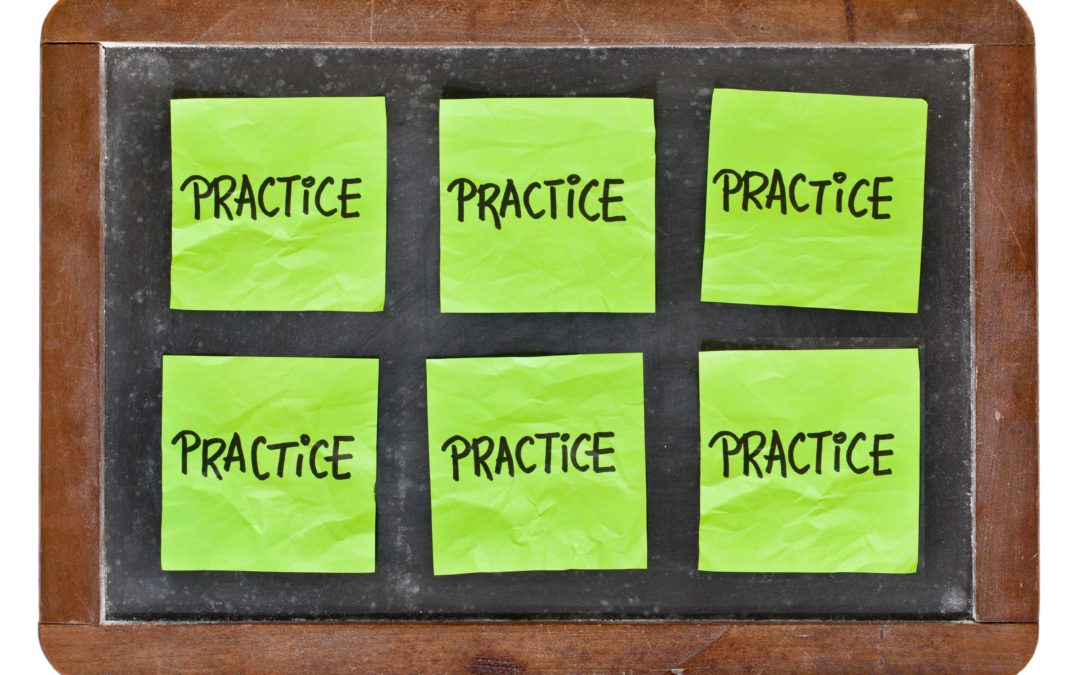Our last blog looked at the importance of being present when goal setting. To close out this topic of brain-based goal setting, we bring you the fourth P: The importance of practice.
Scientific breakthroughs about how our brain prefers to learn new skills have shed light on how to remain goal-focused. During difficult times, we often have new insights about what is most important to us. Ongoing isolation and uncertainty has led many of us to reflect on how we want to live and work – or not! By putting simple consistent steps into practice, we can nudge our brains into hardwiring new habits that optimize the success of achieving our goals and dreams:
- Practice makes progress
Neuroscientists such as Dr. Lila Davachi at New York University have discovered that our brain needs to build a ‘web’ of connections to hardwire new behaviors and skills. The stronger the ‘web’, the easier this is. When embarking on a new goal, it’s important to repeat a new skill or behavior repeatedly, in order to hardwire those new habits.
- Simple and specific
In our enthusiasm, we often take on too much too soon, leaving us quickly disheartened by lack of progress or failure. Our brains prefer to chunk down challenging goals into simple bite-size sets of related tasks that we can complete over time. Commit to small, simple and very specific tasks to perform and practice over the course of each week.
- Positive reinforcement
When you reach your weekly practice targets acknowledge your achievement and progress in some small way. Thanks to the process of neuroplasticity, what we focus on becomes embedded in our brain’s circuitry. Reflect on what you did do, did learn each day – rather than what you didn’t.
- Sleep on it
Studies by Dr. Jessica Payne (University of Notre Dame) have shown that our brains go through ‘de-fragging’ and consolidation of new learning, while we sleep. This means spreading the practice of new skills and behaviors over several days each week (i.e., with multiple opportunities for sleep in between learning events) rather than spending one day only on goal-related activity, more effectively hardwires new knowledge and skills, making sustained behavior change more likely.
- Daydream
There has long been evidence that imagining doing a movement, increases our ability to perform that movement. Visualizing a behavior or action actively recruits and strengthens the same brain circuitry used to perform the activity, in particular the frontal lobe and cerebellum. Olympic athletes have tapped into this research for decades to perfect and improve practice and performance. Spend time each day imagining yourself actively working towards and achieving your goal, a technique known as motivational-general mastery (M-GM).*
We hope this blog series about making your goals Personal and Present tense and using the power of Pictures and Practice has helped you attain your goals. Our next blog series will look at the many ways we can find inspiration in work and life!
*Harvard Business Review, March 05, 2014


Recent Comments